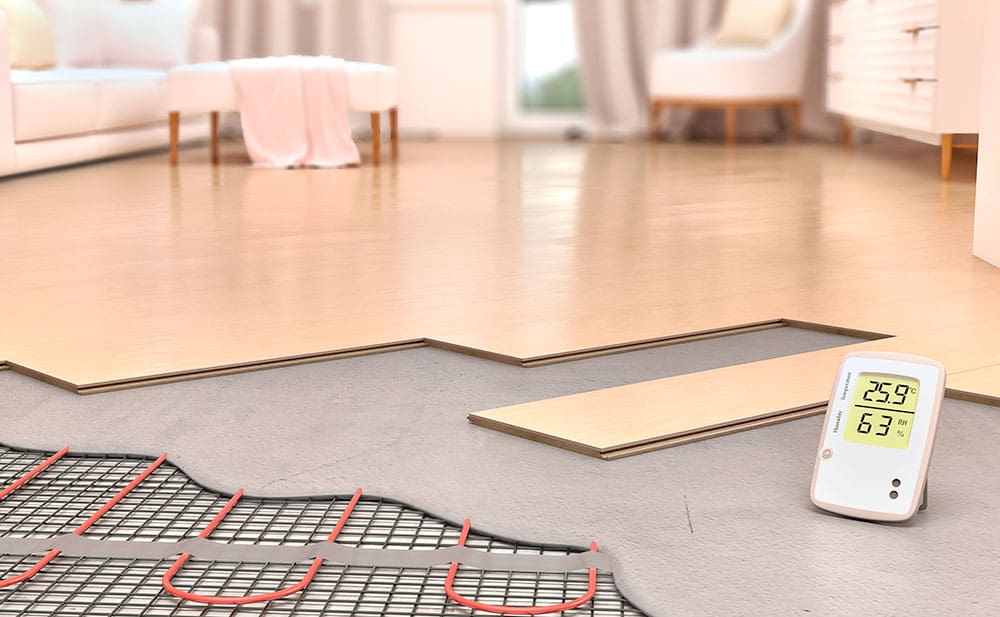A Brief Guide To Underfloor Heating
Underfloor heating is a great way to heat homes.
Underfloor heating involves pipes or electrical cables distributed throughout the home, under the floor. These pipes heat up, supplying the home with warmth from the ground up.
Underfloor heating offers several advantages over traditional boiler systems, including more even heat distribution, energy efficiency and design flexibility. In this article, we briefly look at types of underfloor heating, the installation process, how it heats as well as the benefits of choosing underfloor heating.
Types of Underfloor Heating
There are two types of underfloor heating:
– Hydronic (Water-based) Underfloor Heating: This system moves warm water through a network of pipes that sit beneath the floor.
– Electric Underfloor Heating: This system generates heat through the use of electric cables or mats that sit under the floor.
Underfloor Heating Installation Process
– For hydronic underfloor heating, pipes are laid out in a network across the floor before the floor is covered with a screed or concrete layer.
– With electric underfloor heating, heating mats or cables are laid evenly across the floor before being covered by a layer of tile adhesive or Thinset.
How They Heat
– In hydronic systems, hot water will be heated by a boiler or a heat pump before it is circulated through the pipes.
– Electric systems generate heat directly through the cables or mats.
Efficiency and Comfort
Underfloor heating provides more even heat distribution when compared with traditional radiators. This avoids cold spots in rooms. Because heat rises from the floor, it creates an evenly warm and comfortable environment throughout your home. And, because underfloor heating systems run at lower temperatures than traditional boilers, they can offer energy savings and reduced bills.
Different Flooring Types
Underfloor heating performs best with flooring such as tile, stone, laminate, engineered wood, and some carpets. It’s really important to choose a flooring material that has good thermal conductivity, to ensure the heat is transferred effectively.
Maintenance
Underfloor heating doesn’t need too much maintenance after initial installation. Routing inspections and checks of the system will ensure everything is in full working order.
Want to Install Underfloor Heating?
At Express Liquid Screeds, we supply and lay specialist screeds that offer exceptional thermal conductivity. We partner with a great underfloor heating installation company that manufactures quality underfloor heating components and packages.
If you would like to find out more about our underfloor heating services, just get in touch.



